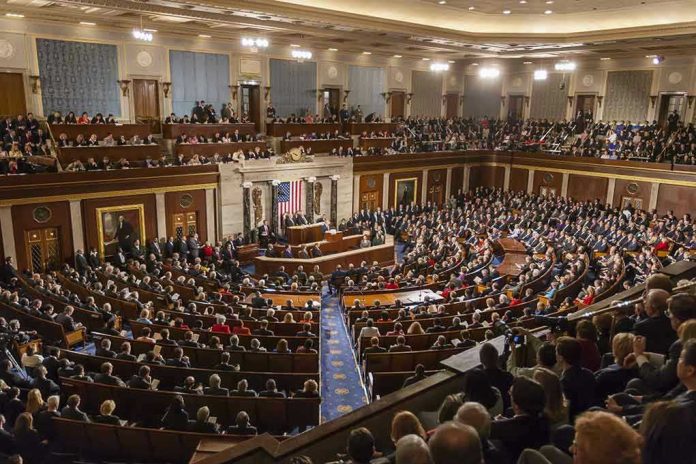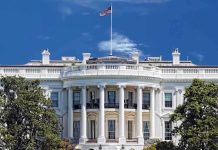
One man’s gambit has frozen Congress, but the real drama is the high-stakes chess match playing out behind closed doors—where blame, pressure, and power could shape the future of American politics for years to come.
Story Snapshot
- Speaker Mike Johnson repeatedly closes the House to pressure Senate Democrats, intensifying the government shutdown spotlight on Chuck Schumer.
- Schumer faces mounting pressure from progressive Democrats, complicating negotiation efforts and party unity.
- The shutdown exposes deep divisions within both parties and threatens lasting damage to public trust.
- Johnson’s tactics and Schumer’s responses set the stage for potential leadership shifts ahead of the 2026 midterms.
Shutdown Standoff: Johnson Targets Schumer
House Speaker Mike Johnson has once again shuttered the House, turning congressional procedure into a weapon in the battle over government funding. By halting all legislative progress, Johnson keeps the nation’s attention—and public frustration—locked onto Senate Majority Leader Chuck Schumer. Johnson’s strategy is simple: refuse to advance new funding bills and frame the shutdown as Schumer’s fault, arguing that Senate Democrats are blocking reasonable stopgap measures. The result is a Washington stalemate, with the House silent and the Senate under a harsh spotlight.
As the shutdown drags into October, Johnson delivers pointed public statements accusing Schumer of prolonging the crisis for political gain. He insists that the House has done its part and that Democrats are responsible for the impasse. This approach is designed not only to force concessions but to shape the public narrative—placing the blame squarely on Schumer and Senate Democrats. The pressure is relentless, and Johnson’s repeated House closures serve as a dramatic backdrop to this ongoing political struggle.
Schumer’s Dilemma: Progressive Pressure and Party Unity
Chuck Schumer finds himself squeezed from both sides. On one hand, Johnson and House Republicans refuse to budge, demanding that the Senate accept their terms or take the blame. On the other, progressive Democrats—including Alexandria Ocasio-Cortez—apply intense pressure for Schumer to reject compromises and push for more progressive policies. Earlier attempts by Schumer to seek short-term solutions drew criticism from his party’s left wing, leaving him little room to maneuver. The threat of primary challenges looms, further weakening his negotiating position and forcing him to balance pragmatism against party ideology.
Schumer’s refusal to accept short-term stopgap funding proposals is not just a tactical move—it’s a response to internal party dynamics that have grown increasingly volatile. Progressive Democrats see compromise as capitulation, demanding bold action and threatening to undermine Schumer’s leadership if he fails to deliver. This internal fracture complicates negotiations and makes a resolution elusive, as Schumer struggles to unite his caucus while fending off attacks from both Republicans and progressives.
Political Fallout: Public Trust Erodes, Leadership in Flux
The consequences of this shutdown extend far beyond Capitol Hill. Federal employees and contractors face lost wages and mounting uncertainty, while recipients of government services endure delays and disruptions. The broader economy feels the strain, with markets jittery and investor confidence shaken by political instability. As negotiations stall, the public grows increasingly frustrated with what appears to be government dysfunction driven by partisan gamesmanship.
Political analysts warn that repeated shutdowns erode public trust and rarely yield lasting policy wins. The reputations of Johnson and Schumer hang in the balance, and both parties risk electoral backlash ahead of the 2026 midterms. For Johnson, the gamble is that keeping the shutdown heat on Schumer will force a breakthrough—or at least shift blame. For Schumer, the challenge is to maintain party unity and avoid being outflanked by progressives, all while seeking a path to reopen the government. The outcome of this standoff may well determine the future leadership dynamics in Congress and reshape the narrative heading into the next election cycle.
Expert Analysis: Cyclical Brinkmanship and Divided Power
Political scholars and industry experts see this shutdown as a textbook case of cyclical brinkmanship—a recurring feature of American politics rooted in deep structural polarization. Johnson’s procedural tactics, while effective in the short term, may backfire if the public perceives House Republicans as obstructionist. Conservative commentators blame Schumer for yielding to the far left and risking government stability, while progressives argue that Democratic compromises have historically undermined party priorities.
The true balance of blame is fiercely contested and likely depends on partisan perspective. Major news outlets, White House statements, and congressional press conferences provide real-time updates, but the narrative remains fluid. What is clear is that this shutdown is both a symptom and a catalyst of deeper political divisions, with the potential to reshape leadership and public perceptions for years to come.
Sources:
White House — Government Shutdown Tracker







